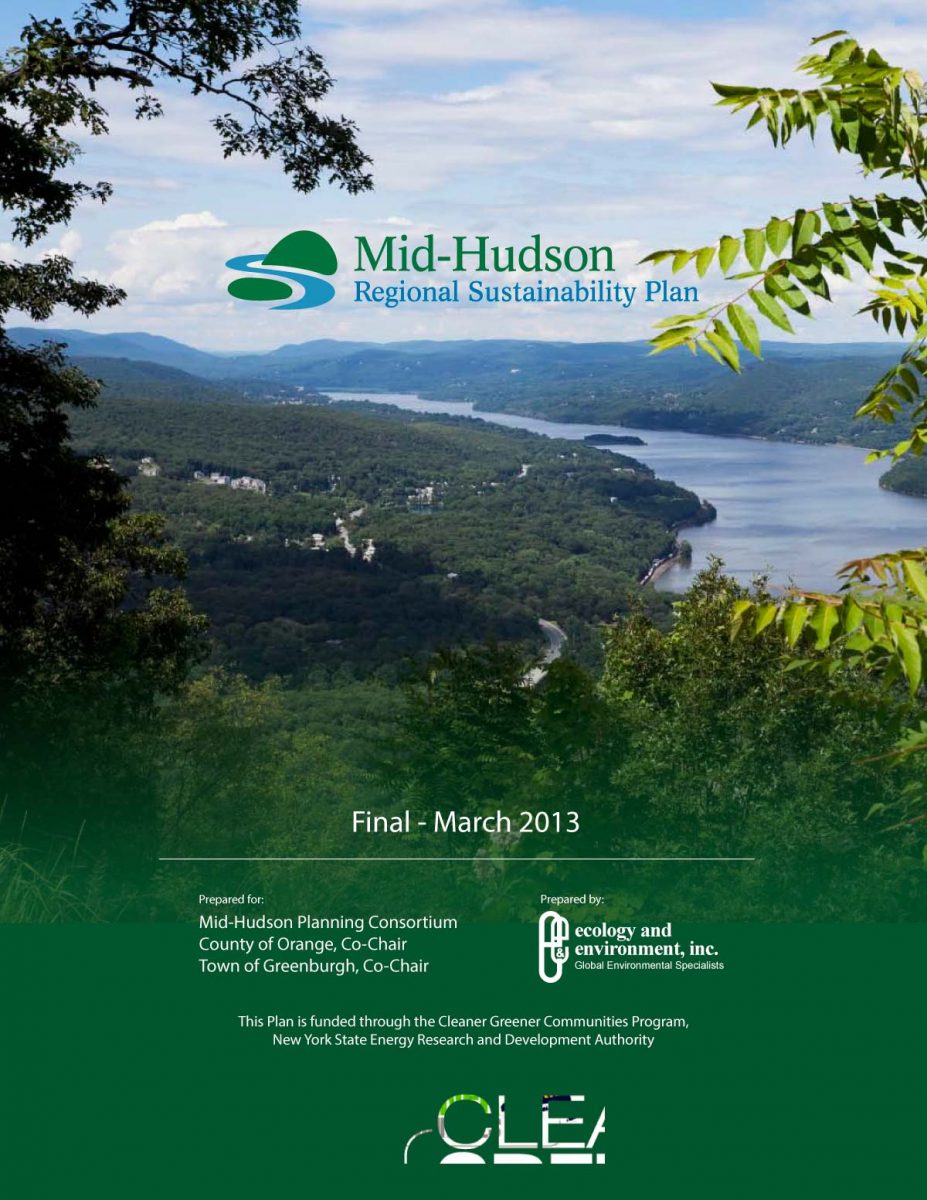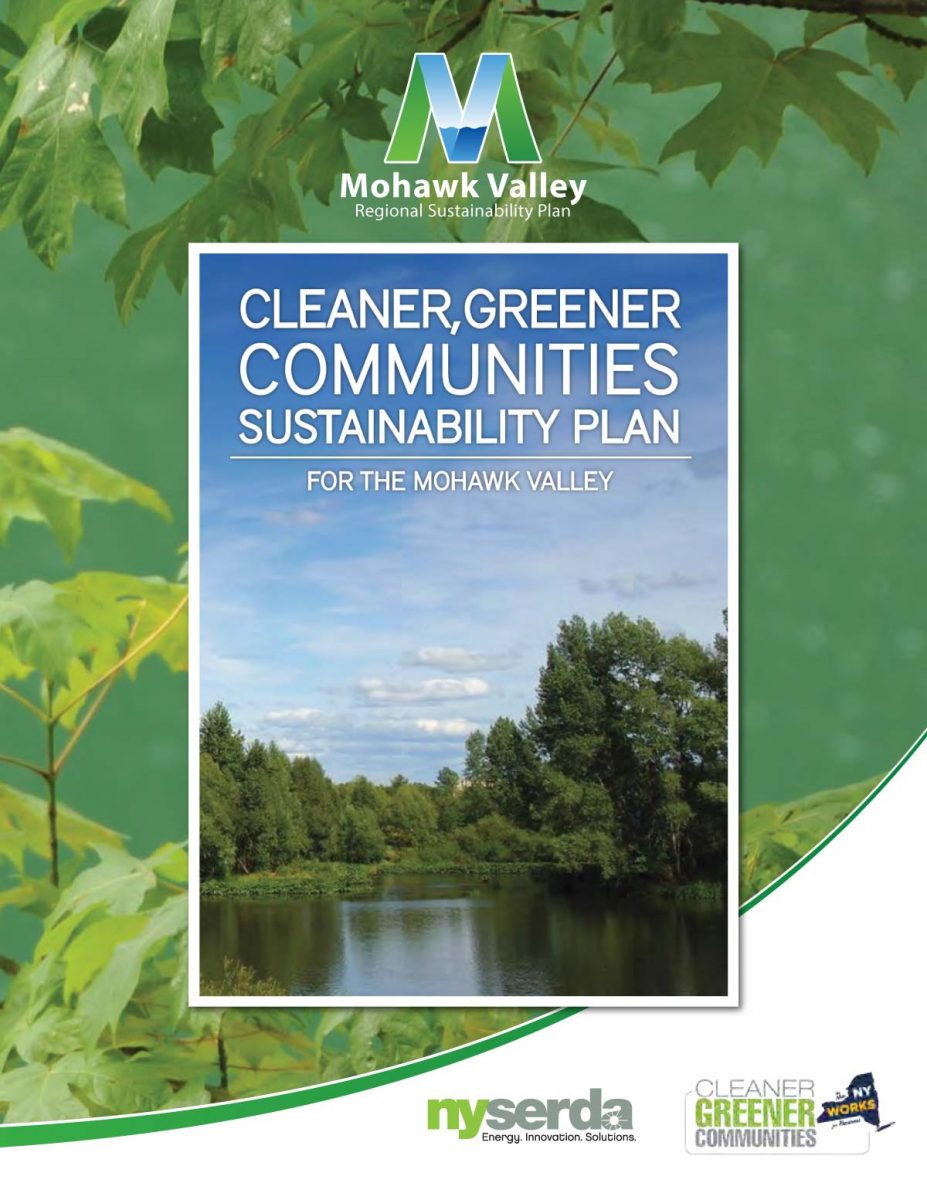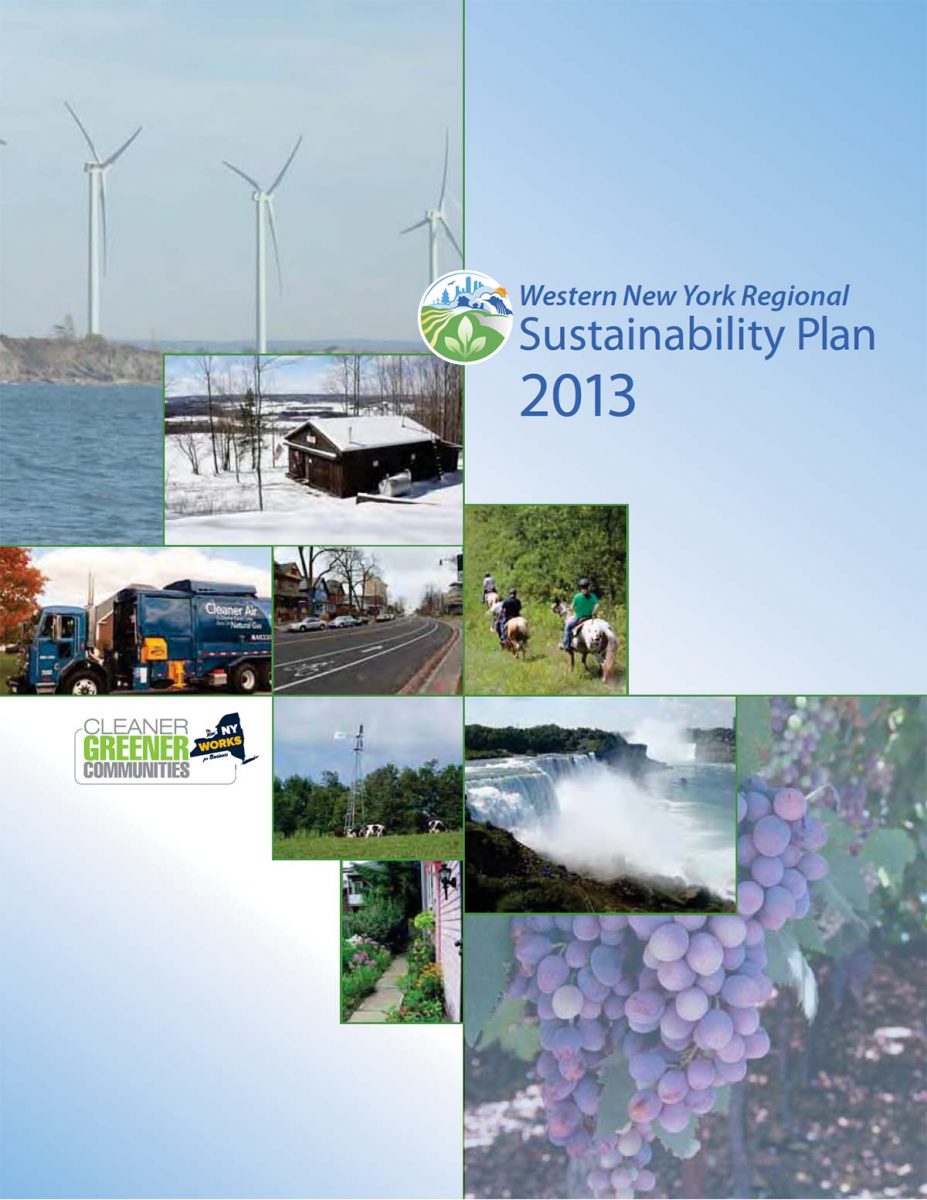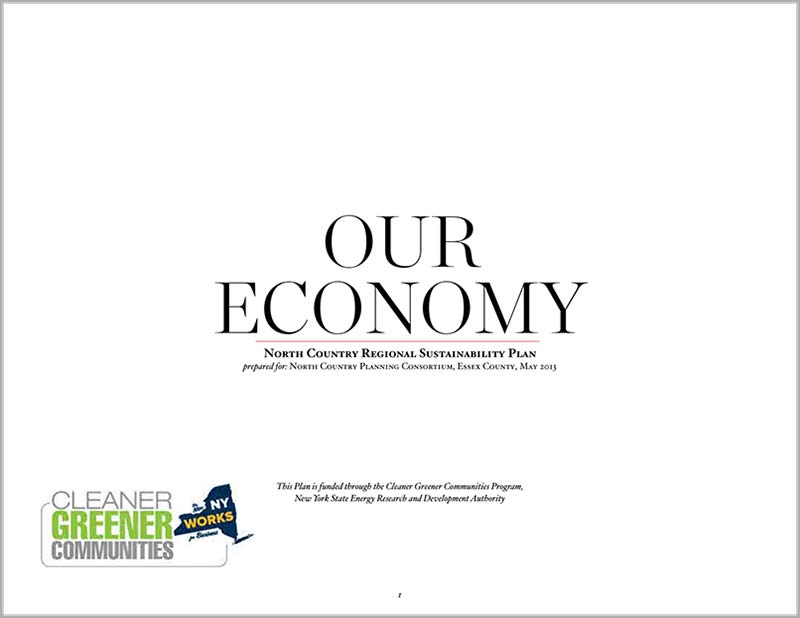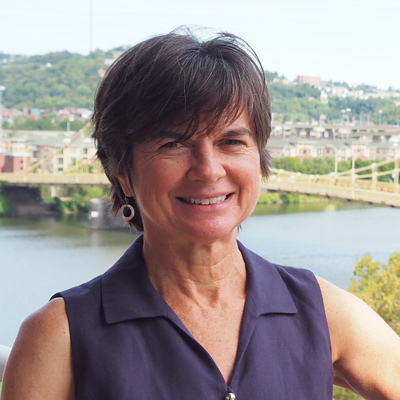PROJECTS
New York State Regional Sustainability Plans
| Location | New York State Regions of North Country, Mid-Hudson, Mohawk Valley, and Western New York |
| Client | County Governments working with a consortium of stakeholders from each Region |
| Role | Project Director for Ecology & Environment, Inc. (later acquired by WSP) |
In 2011, New York State (NYS) Governor Andrew M. Cuomo announced the Cleaner, Greener Communities Program (CGC). The CGC Program was administered by the New York State Energy Research and Development Authority (NYSERDA), who empowered regions to lead the development of sustainability plans and implement projects and smart growth practices that would significantly improve the economic development and environmental well-being of their communities.
CGC funding was derived from NYS’s participation in the Regional Greenhouse Gas Initiative (RGGI) and was made available to New York’s 10 regions through a two-phase competitive grant process operated by NYSERDA:
- Phase I provided nearly $10 million (up to $1 million per region) in funding to regional planning teams to create comprehensive sustainability plans or to expand the scope of existing sustainability plans.
- Phase II provided up to $90 million toward regional projects that support the regional sustainability goals identified during the planning process. Phase II was launched in 2013.
Ecology & Environment, Inc. (E&E) was competitively awarded contracts from four of the ten NYS regions to serve as the prime consultant to lead the plan development process for each region. Rebecca Flora, as a consultant to E&E supported the proposal development and contract award process. With the success of winning contracts for four regions, she was then hired as E&E’s first Sustainable Communities Practice Leader to direct development of all four plans from within E&E. In this role she led a team of four project managers and over fifty technical support persons to address the needs of 25 counties, 33 cities, 457 towns and 234 villages and develop all four plans over about 15 months. She also provided direct subject matter expertise and supported public engagement processes across all regions while also conducting quality assurance review of plans. E&E was later contracted directly by NYSERDA to support development of the Phase II implementation process which Rebecca also directed for E&E until her departure in 2016 to return to her consulting business – ReMAKE Group.
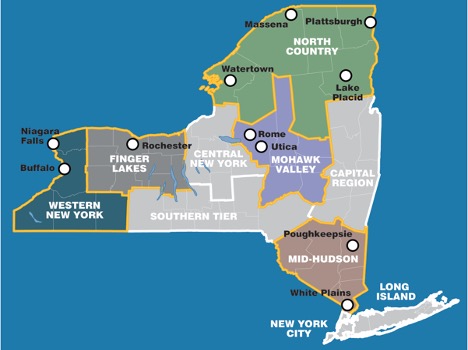
Each sustainability plan was uniquely crafted to reflect stakeholder interests and regional identities. As part of the baseline conditions data collection, a greenhouse gas (GHG) inventory was undertaken to identify primary contributors to climate change along with other baseline data. Priority actions were identified across multiple sectors that varied in each region and included: economic, land use, transportation, energy, materials, education and working landscapes (agriculture, forestry, open space).
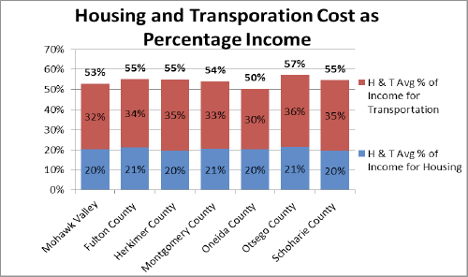
The planning process followed the devastation of Hurricane Irene on the portions of the North Country in 2011 and was underway when Hurricane Sandy hit NYC and region in 2013; thereby, creating an even higher level of interest in the climate adaptation and resiliency segments that were included in all plans. Policy and Economic sections were required in all plans and viewed as significant factors in the prioritization and ultimate scoring of projects for implementation awards.
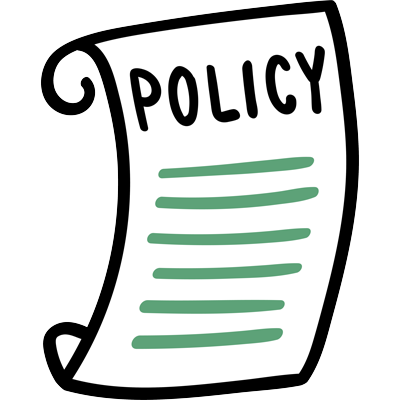
Policy Systems
The CGC program was created to inform regional policy decisions by providing each region with equal access to funds for conducting baseline data collection and planning processes that included public engagement for the establishment of priority goals and metrics. Local governments were the contracting agencies and they worked collaboratively with non-government organizations and regional stakeholders to develop the plans with expert technical support from the E&E team. The sustainability planning process was unique in that also served to foster cohesion and cooperation within regions that had often not worked together in that manner.

Economic Systems
Each of the ten regional boundaries were based on the existing regional economic development councils recently formed by NYS and as such, served to prioritize regional projects for state funding. Baseline data informed economic development decisions for each region which varied drastically in context from rural working landscapes to intensely developed and older industrial areas. Ultimately, all sustainability plans served to inform the prioritization of future economic development projects that would best create multiple benefits for each region.
Each of the four plans can be found below. They were all produced in the timeframe of 2012-2013 and remain a valuable tool for the regional planning and provide baseline data for tracking of progress.
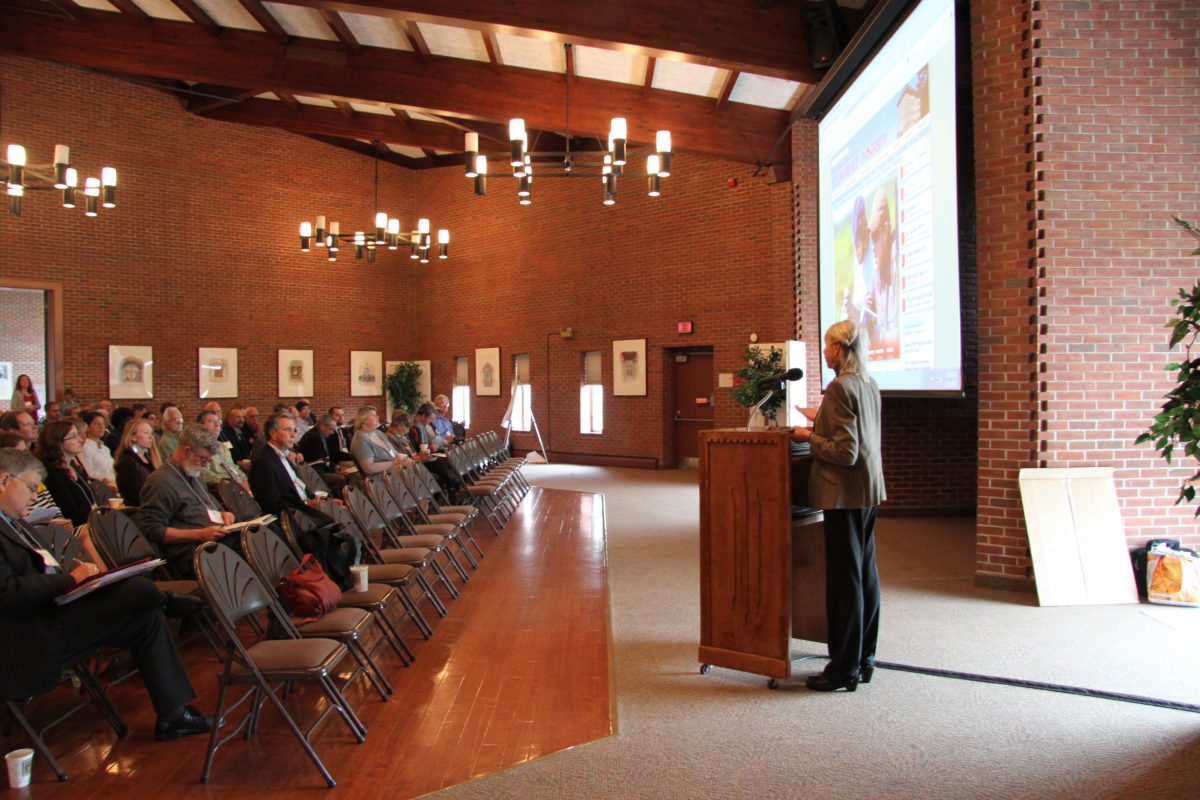
Our Economy – North Country Regional Sustainability Plan
LET’S CHAT
Do your local plans adequately address cross-cutting topics of sustainability and resiliency?
Contact me at the Maryland Department of Planning.

